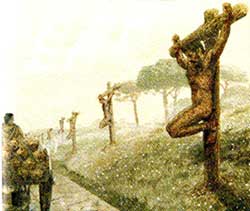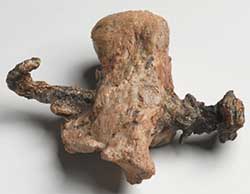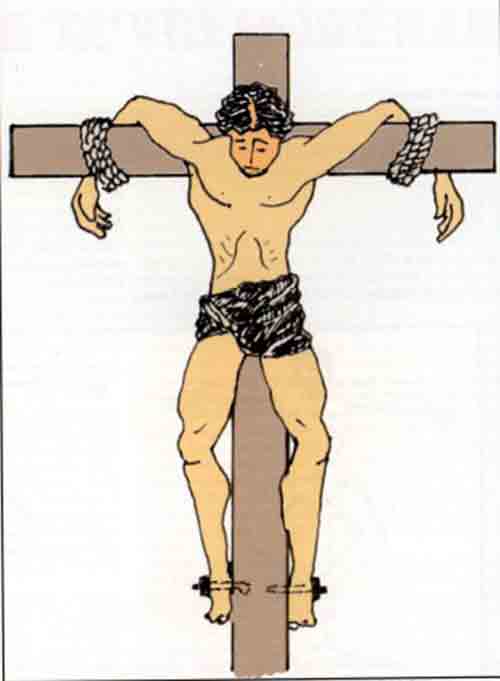
“Crucified under Pontius Pilate.”
We talked about what we know about Pontius Pilate. Let’s talk about what we know about crucifixion.
We don’t know what year the crucifixion of Jesus happened. The nearest guess is 33 AD.
We do know that it happened on a Friday (there is not a hundred percent agreement about that) around Jewish Passover time – so near full moon.
We mostly think of the gibbet on which Jesus was executed as consisting of two beams of wood. The Bible uses words for a tree, ξύλον (xylon), five times (Acts 5:30, 10:39, 13:29, Galatians 3:13, and 1 Peter 2:24) and a word, σταυρός (stauros), that could mean a single pole – so a stake; or that latter word could mean a cross – the way we usually think.
We sanitise the cross, make it pretty and bronze, silver, jewellery. [Overheard in a jewellery shop: “Do have any with the little man on it?”]
This was an instrument of torture, humiliation (you were probably up there naked) and of execution. It is one of the cruellest ideas humans have invented. It was horrific. And it was supposed to be.
In 71 BC, about 6,600 followers of Spartacus were crucified on the Appian Way as part of a Roman victory celebration.
Normally the Romans would not have wasted nails on these people. They would just tie them up to the nearest tree or stake or cross and leave them there to die. Their family might feed them for some days while they slowly died. There are accounts of some escaping. Some would possibly have been eaten by dogs – from the feet first.
If we were having this conversation in 1960 (surprisingly as that’s what I said for Pontius Pilate) it might go a bit differently. We had not found any actual physical evidence of the Romans using nails for crucifixion. The most obvious explanation is that the Romans reused the nails. They were expensive and not to be wasted. They mostly wouldn’t bother using nails – but if there was someone they particularly wanted to hurt – well they’d reuse the nails from one executed person on another they were executing.
We don’t know how many nails they used on Jesus (anything up to 14 would have been possible. 4 is common in art before the Renaiscance. After that 3 is most common – with the 2 feet nailed by the same nail).

In 1968 archaeologists in Jerusalem found the body of a crucified male. He was in his late 20s. His name was Yohan Ben Ha’galgol, and he probably died about 70 AD in the revolt against Rome.
There is a nail through the heel bone. His leg bones were both broken (cf. the story about Jesus – John 19:31-36). Nails went into the side of the heel – so into the side of the wood in that case.
Some people, of course, could have been crucified facing into the tree.
This is the fourteenth post in a series on the Creed.
The first is Apostles’ Creed.
The second is I believe in God.
The third is a source of the Apostles’ Creed.
The fourth is I believe in the Father.
The fifth is Handing over the Creed.
The sixth is I believe in Jesus Christ, God’s only Son
The seventh is Don’t use the creed in worship
They eighth is Truly God truly human
The ninth is Conceived by the Holy Spirit
The tenth is Don’t use the creed in worship (part 2)
The eleventh is Born of the Virgin Mary
The twelfth is Don’t use the creed in worship (part 3)
The thirteenth is Crucified under Pontius Pilate



